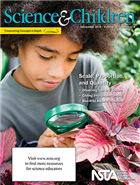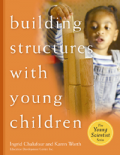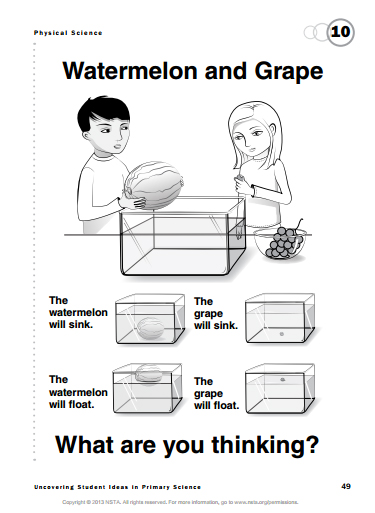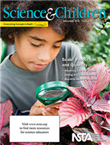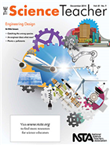In 2007, Rising Above the Gathering Storm: Energizing and Employing America for a Brighter Economic Future (RAGS) was released from the National Academies Press and heralded the need for improved performance in producing a STEM prepared workforce for the future – the future including teaching, business, and policy. It set forth four recommendations.
“The four recommendations focus on actions in K–12 education (10,000 Teachers, 10 Million Minds), research (Sowing the Seeds), higher education (Best and Brightest), and economic policy (Incentives for Innovation) that are set forth in the following sections. Also provided are a total of 20 implementation steps for reaching the goals set forth in the recommendations.
The committee’s recommendations are the fundamental actions the nation should take if it is to prosper in the 21st century. Just as “reading, writing, and arithmetic” are essential for any student to succeed—regardless of career—“education, research, and innovation” are essential if the nation is to succeed in providing jobs for its citizenry.”
While many of the action steps identified for the preparation of K-12 educators, investment in research by the federal government, and monetary support through new and strengthened legislative policies have definitely fallen short, there is no doubt that much of what the business community wanted, still states they need, and voices their concerns over nearly eight years later has not yet happened.
According to the most recent report, Solving the Skills Gap: CEOs Weigh In, where 120 CEOS completed a survey, there are troubling findings which are summarized in the report as:
- CEOs say the skills gap hurts business. Nearly 98% of CEOs say that the skills gap is a problem for their companies;
- most open jobs require STEM knowledge and skills. Approximately 60% of job openings require basic STEM literacy and 42% require advanced STEM knowledge. Nearly two-thirds of job openings that require STEM skills are in manufacturing and other services;
- the biggest skills gaps are in advanced computer and quantitative knowledge. 62% of CEOs report problems finding qualified applicants for jobs requiring advanced computer/IT knowledge, and 41% report problems for jobs requiring advanced quantitative knowledge; and
- many job candidates lack even basic STEM skills. 38% of CEOs say that at least half of their entry-level applicants lack basic STEM literacy. 28% say that at least half of their new entry-level hires lack basic STEM literacy.
The Business Roundtable did also convene a panel of the representative CEOs that discussed strategies to close this gap and highlight the fact that “by 2012, business organizations already were spending $164.2 billion to train their employees [and that] [i]n 2013, training budgets jumped by another 15 percent. Yet these efforts alone will not erase the skills deficit.” They went on to further purport that “[t]o build the workforce needed for 21st century jobs, more must be one now to strengthen the education and training pipeline serving youth and working adults.”
Needless to say, I am sure that all of these CEOs have conducted a SWOT analysis related the problems their individual companies are finding due to the shortage of STEM prepared workers. I can even surmise that one of the more periphery and less defined opportunities to meet their needs was to have better prepared workforce ready graduates who have the competencies, skills, and knowledge needed to fill these gaps. They Business Roundtable has even produced a reasonably sounding action plan that addresses the problem, vision and needed actions to remediate this gap. Even within the infographic that was released, they identified several ways that would help to develop STEM skills in potential future employees which included a 70% of the companies saying internships was one of the most effective ways to address shortages and 37% stating apprenticeship programs. They also felt that assisting educational institutions with curriculum development (54%) and classroom instruction (21%) were potential solutions. You can even check out their blog on the topic.
As stated in RAGS, “[t]he United States faces an enormous challenge because of the disparity it faces in labor costs. Science and technology provide the opportunity to overcome that disparity by creating scientists and engineers with the ability to create entire new industries—much as has been done in the past.” Recommendations stated with RAGS attempted to demonstrate the need and build support for education, research and innovation. And suffice it to say, the report did generate discussion around as well as some action for these four recommendation areas – but apparently not enough. Why not enough one may ask? Well eight years later the Business Roundtable’s report is stating that “[a] new vision is needed — along with concerted action — to close the skills gap, enhance education and training opportunities for America’s workers, and return our economy to its full promise.”
So the reality is that every so many years, there seems to be an outcry from the business community that focuses on their needs, I cannot denounce their attempts to bring to light what they need to be successful in business and honestly what we need to be a successful nation in order to compete in international and global circles in the fields encompassed by STEM. Is there perhaps a mismatch between what policy makers in the educational arena have recently deemed important (i.e. assessments) and college and career ready skills, my personal opinion is absolutely. So we are at a crossroads in the middle of the continuing storm.
One of the points of consideration at this crossroads, comes down to does education follow money, power, good intentions for the future or the needs of students? If the latter, who gets to determine what students need to be successful in the future–educators, businesses, policy makers? My personal opinion would be somewhere at the nexus of all three with give and take at all intersections. If businesses truly want to assist in this process, why do they not include educators in the discussion (in full disclosure there may have been, however there was no listing of participants in the Business Roundtable’s report, however the survey indicates that 120 CEOs completed the survey and the panel shown consisted only of CEOs at businesses). I’d personally suggest taking 10% (16.4 million dollars) of the money they needed to train their entry level workers and invest it in school based internships, educational programs, K-16 training for educators, and collaborative efforts for a period of eight years (with comparable increases each year of course) to determine if that has any ability to produce what they need. This amount is similar to one of their action plans noted but does not indicate it would be on a yearly basis.
While I am sure I could generate many more recommendations, recommendations are just that, recommendations – whereas the follow through, commitment to them, as well as overall “sweat equity” on the part of all stakeholders is what determines if they will be recommendations for, reactions to or resolutions of the situation.
So as the final days of 2014 comes to a close, what recommendation/resolution would you personally make to the business community that would bring both sides together to meet the needs of all of our students?











 I like to consider my classroom as a partnership with the students. So this year (my first year), the students were able to choose their own teams for cooperative learning and lab activities. This worked out in some cases, but there are teams that don’t seem to get much accomplished. They’re often off-task and unfocused. Should I switch to assigning students to teams? —C., Illinois
I like to consider my classroom as a partnership with the students. So this year (my first year), the students were able to choose their own teams for cooperative learning and lab activities. This worked out in some cases, but there are teams that don’t seem to get much accomplished. They’re often off-task and unfocused. Should I switch to assigning students to teams? —C., Illinois


